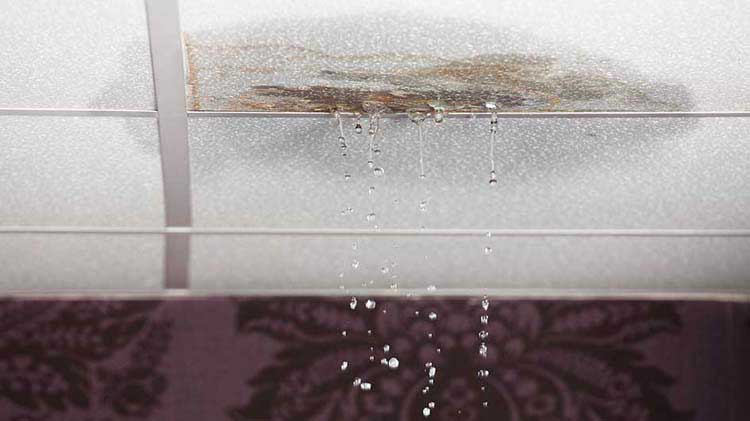Spot Six of Commonest Leak Triggers Within Your House
Spot Six of Commonest Leak Triggers Within Your House
Blog Article
Are you searching for facts and techniques on Top Causes of Home Water Leaks?

Leakages not only cause waste of water but can also cause unneeded damages to your house as well as promote unwanted natural development. Regrettably, water leaks could go undetected considering that the majority of the pipework in our home is concealed. By looking and also comprehending for day-to-day circumstances that create leaks, you can shield your house from future leakages and unneeded damages. Today, we will check out six leak triggers that might be causing your pipelines to trickle.
Elbowing in origins
The majority of water leakages begin outside your home rather than inside it. If you notice a sudden decline in water stress, state in your tap, require time to head out and analyze your lawn. You might see wet patches or sinkholes in your backyard, and that may imply that tree roots are getting into water lines causing water to permeate out. You can have your plumber check for breach, especially if you have trees or hedges near your building.
Rusty water supply
As time goes by, your plumbing system ages and also corrosion such as rust may begin gnawing the pipelines. This could be the source of discoloration or bending on your pipes. This asks for an evaluation with your plumber quickly. Think about replacing the pipelines because they are at a higher threat of rust than the newer versions if our plumbing system is old.
Faulty Pipeline Joints
Pipeline joints can wear away over time, resulting in water leakages. If you have loud pipelines that make ticking or banging sounds, particularly when the hot water is turned on, your pipe joints are most likely under a whole lot of stress.
Instant temperature adjustments.
Severe temperature level adjustments in our pipelines can trigger them to expand and also acquire unexpectedly. This development as well as tightening may cause fractures in the pipes, particularly if the temperature are below freezing. If you maintained an eye on exactly how your plumbing functions, it would be best. The presence of the formerly stated scenarios often indicates a high threat.
Poor Water Connectors
At times, a leakage can be brought on by loosened pipes and also pipes that supply your appliances. More often than not, shifting is what causes the loose water Connections. You might locate when it comes to a washing machine, a pipe might spring a leakage as a result of drinking throughout the spin cycle. In case of a water links leakage, you may observe water running straight from the supply line or pools around your appliances.
Blocked Drains
Obstructed drains might be irritating as well as inconveniencing, yet they can sometimes end up triggering an overflow causing break pipelines. Maintain getting rid of any materials that may go down your drains that could clog them to avoid such inconveniences.
All the above are reasons for leakages but not all water leakages result from plumbing leaks; some leakages could originate from roof leaks. All leakages ought to be repaired immediately to stay clear of water damages.
Leaks not only trigger waste of water however can additionally trigger unneeded damages to your house as well as promote undesirable natural development. By comprehending and looking for day-to-day circumstances that cause leakages, you can protect your house from future leakages as well as unneeded damages. Today, we will look at 6 leakage causes that might be creating your pipes to leak.
At times, a leakage can be caused by loose pipes and also pipelines that supply your home appliances. In situation of a water links leakage, you might notice water running directly from the supply line or puddles around your appliances.
How To Check For Water Leak In Your Home
How To Check for Leaks
The average household's leaks can account for nearly 10,000 gallons of water wasted every year and ten percent of homes have leaks that waste 90 gallons or more per day. Common types of leaks found in the home are worn toilet flappers, dripping faucets, and other leaking valves. These types of leaks are often easy to fix, requiring only a few tools and hardware that can pay for themselves in water savings. Fixing easily corrected household water leaks can save homeowners about 10 percent on their water bills.
To check for leaks in your home, you first need to determine whether you're wasting water and then identify the source of the leak. Here are some tips for finding leaks:
Take a look at your water usage during a colder month, such as January or February. If a family of four exceeds 12,000 gallons per month, there are serious leaks.
Check your water meter before and after a two-hour period when no water is being used. If the meter changes at all, you probably have a leak.
Identify toilet leaks by placing a drop of food coloring in the toilet tank. If any color shows up in the bowl after 10 minutes, you have a leak. (Be sure to flush immediately after the experiment to avoid staining the tank.)
Examine faucet gaskets and pipe fittings for any water on the outside of the pipe to check for surface leaks.
Undetected water leaks can happen without the home or business owner even realizing. If you suspect a water leak, but not able to find the source. It is time to contact a professional water leak detection service, The Leak Doctor.
How To Find a Water Leak In Your Home
https://www.leakdoctor.com/blog/How-To-Check-For-Water-Leak-In-Your-Home_AE197.html

I recently found that write up about How to detect water leaks in your home while perusing the search engines. Are you aware of another individual who is fascinated by the subject? Why not share it. I thank you for reading our article about How to Find Water Leaks.
Quote Report this page